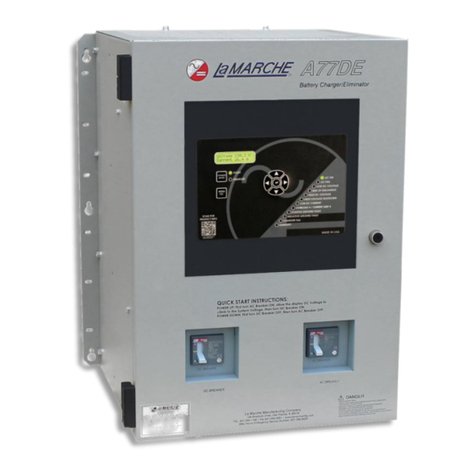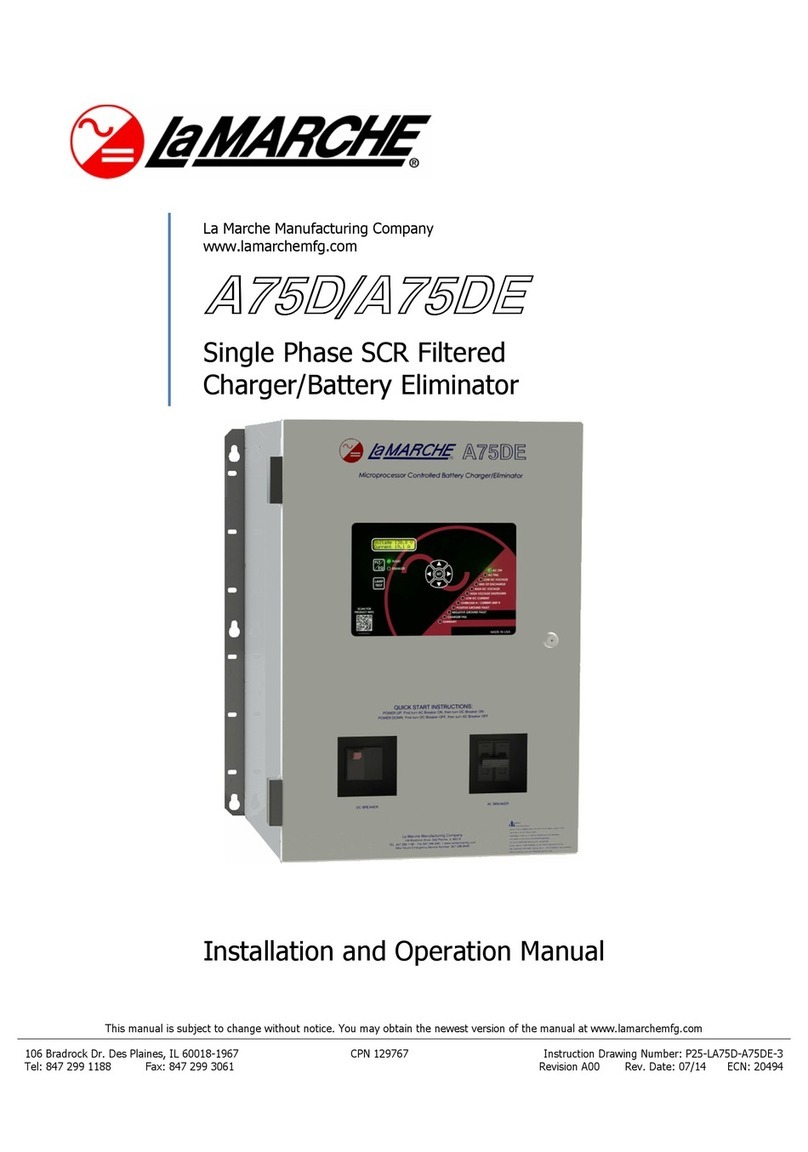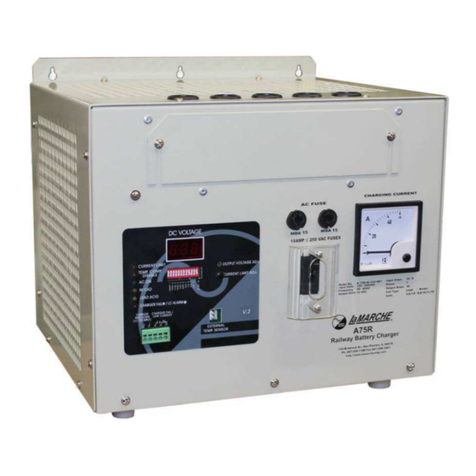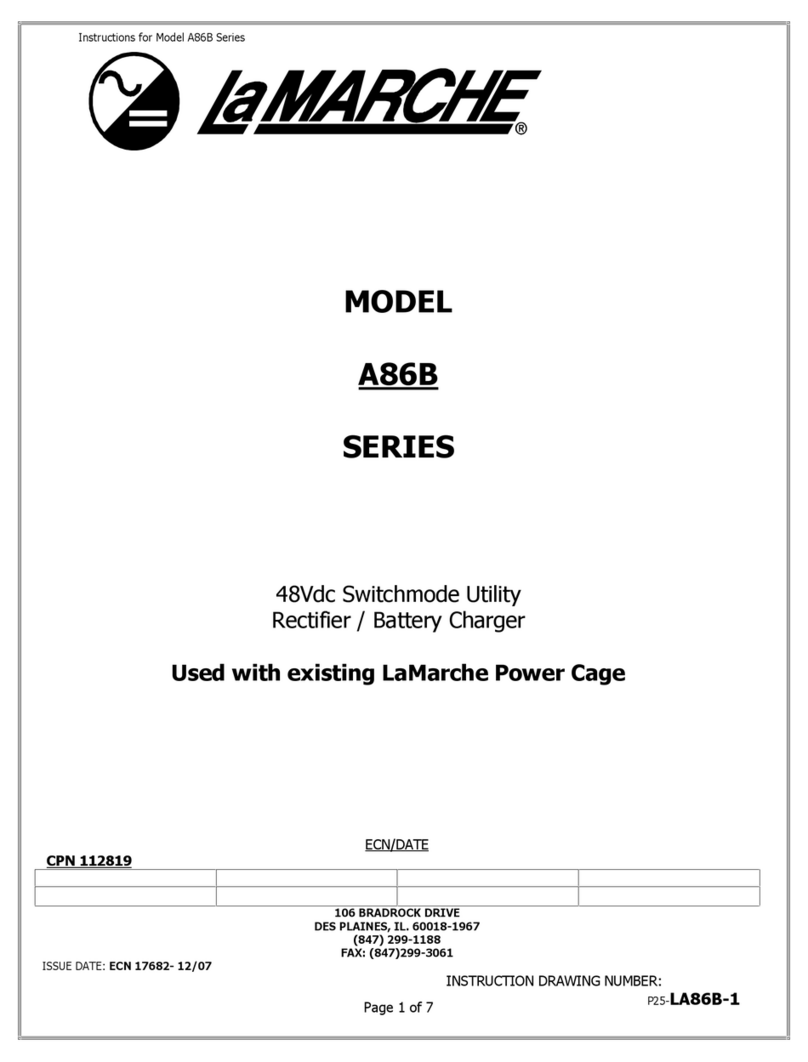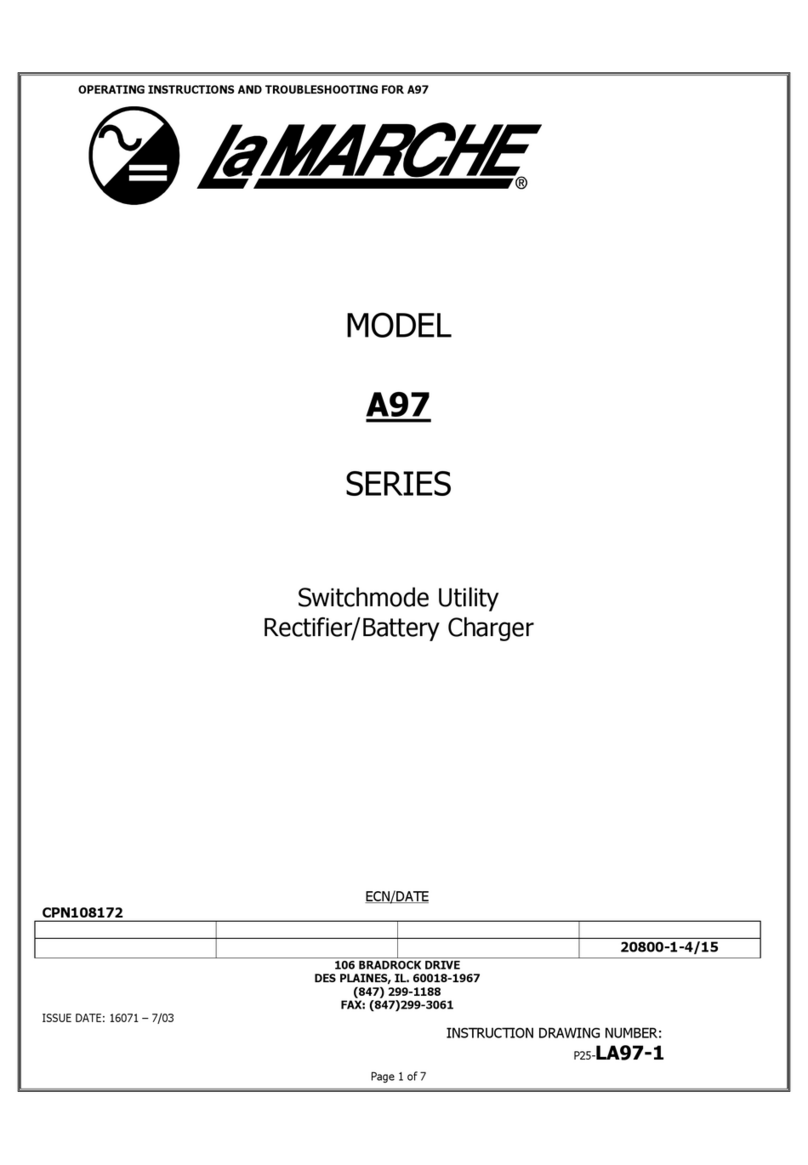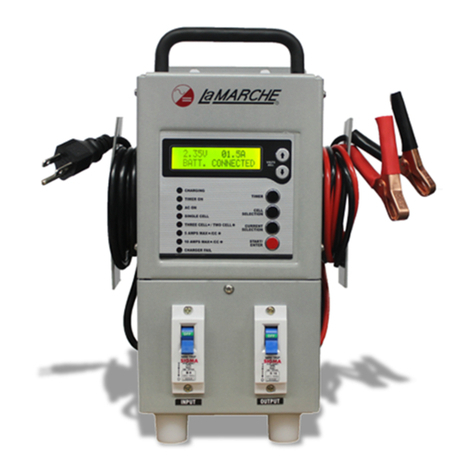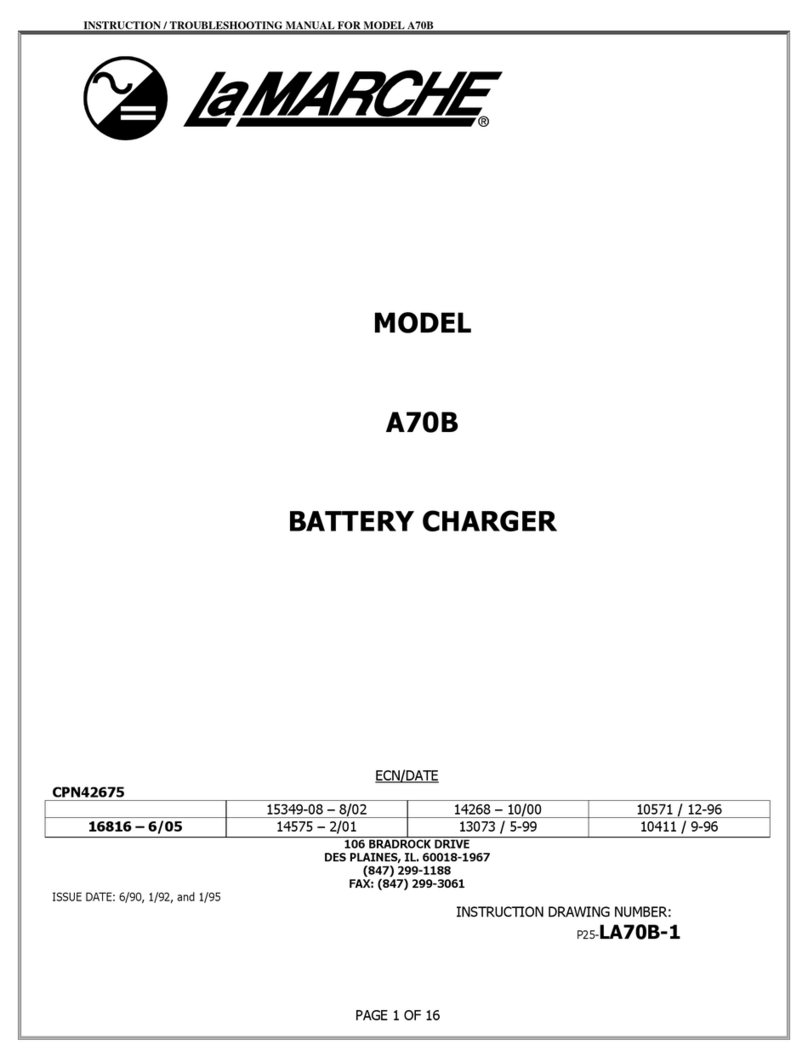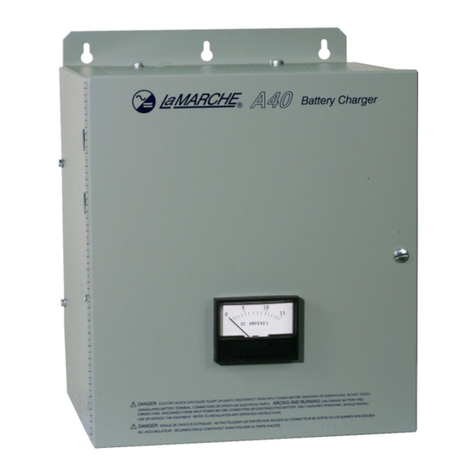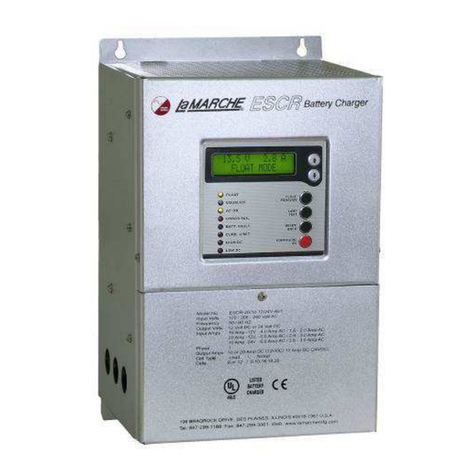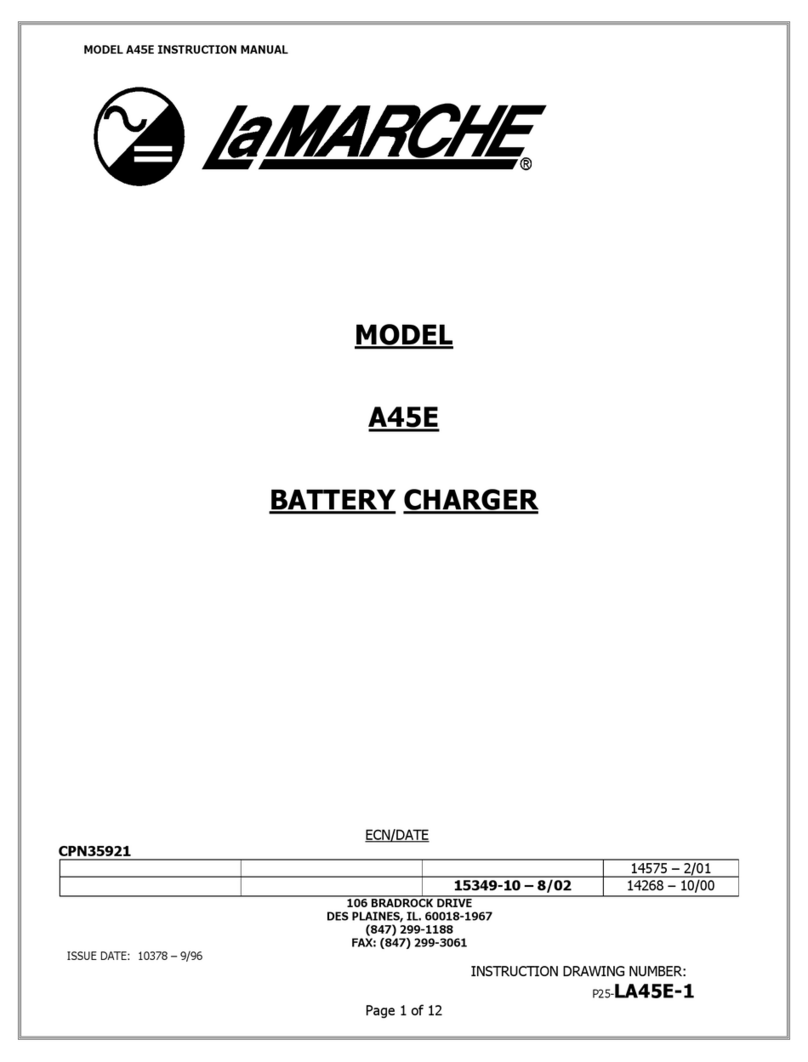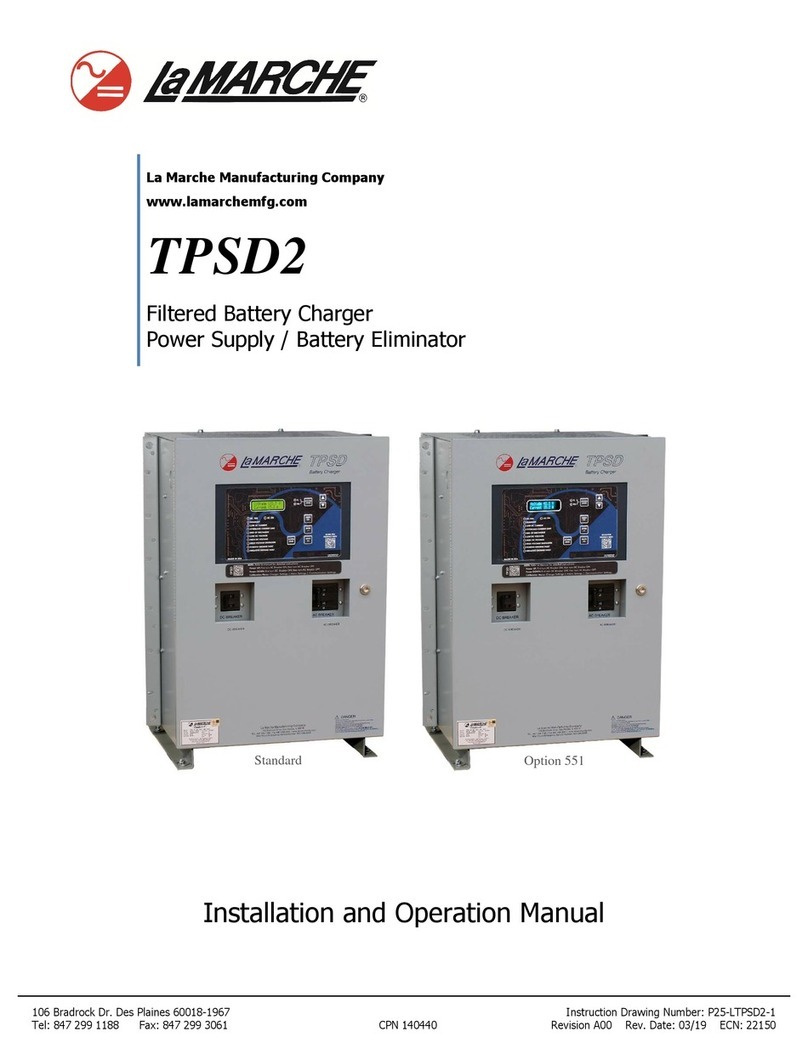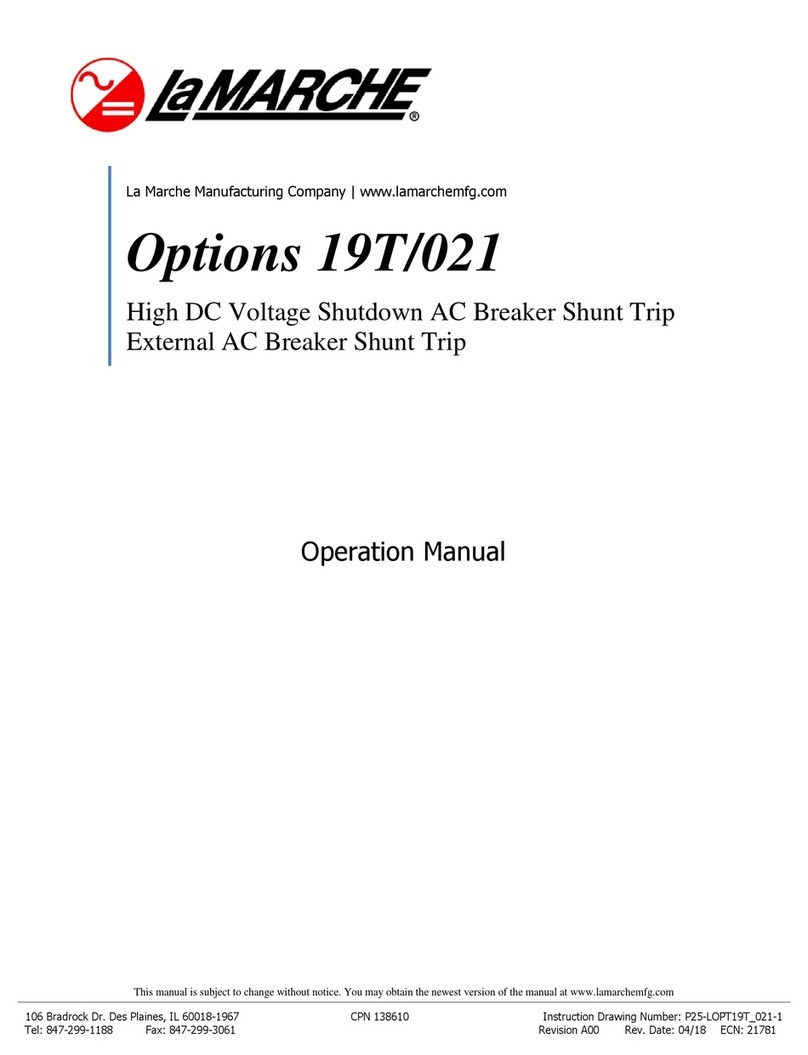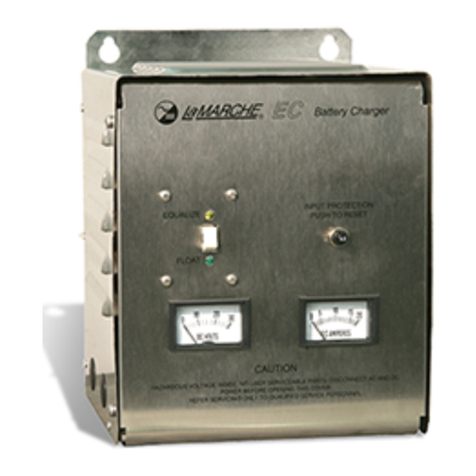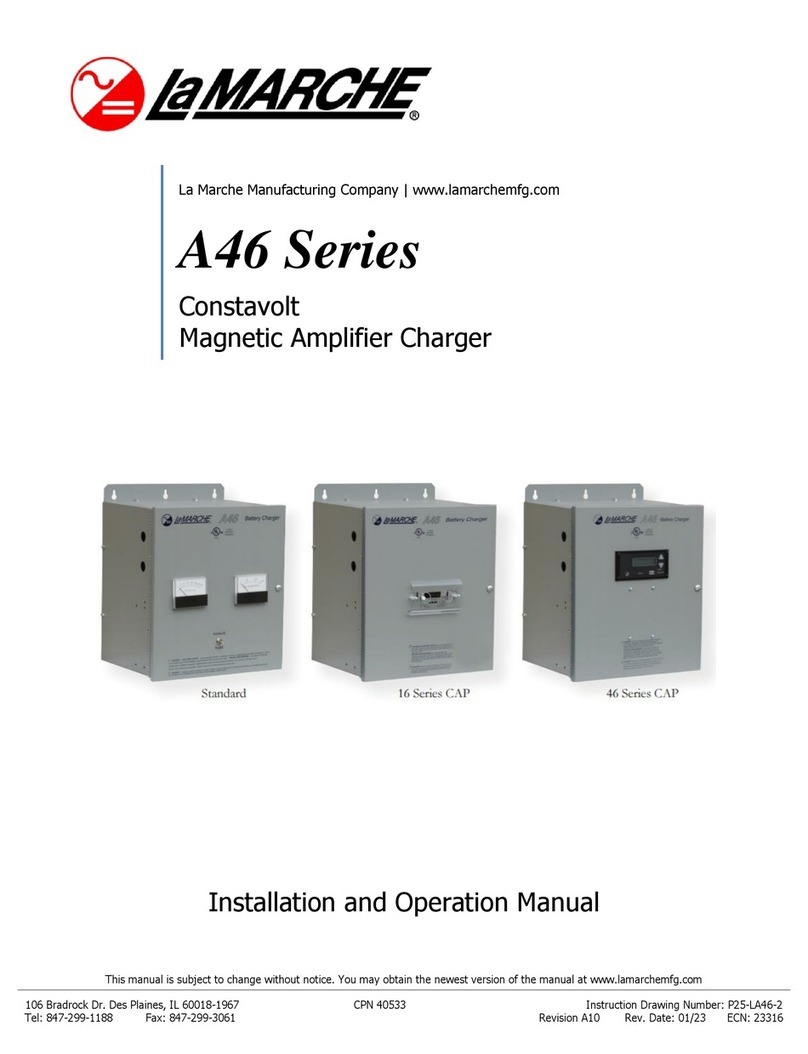
i
Important Safety Instructions
Before using this equipment read all manuals and other documents related to this charger and other equipment
connected to this charger. Always have a copy of a charger’s manual on file nearby in a safe place; if a replacement
copy of a manual is needed, it can be found at www.lamarchemfg.com.
Electrical Safety
WARNING:
Hazardous Voltages are present at the input of power systems. The output from
chargers and from batteries may be low in voltage, but can have a very high current capacity that
may cause severe or even fatal injury.
When working with any live battery or power system, follow these precautions:
• Never work alone on any live power system; someone should always be close enough to come to your aid.
• Remove personal metal items such as rings, bracelets, necklaces, and watches.
• Wear complete eye protection (with side shields) and clothing protection.
• Always wear gloves and use insulated hand tools.
WARNING:
Lethal Voltages are present within the power system. Parts inside the charger may still
be energized even when the charger has been disconnected from the AC input power. Check with a
meter before proceeding. Do not touch any uninsulated parts.
• A licensed electrician should be used in the installation of any charger.
• Always disconnect the charger from the supply, batteries, and loads before performing maintenance,
replacing parts, or cleaning.
• Always assume that an electrical connection is live and check the connection relative to ground.
• Be sure that neither liquids nor any wet material come in contact with any internal components.
• Do not operate this charger outside the input and output ratings listed on the charger nameplate.
• Do not use this charger for any purpose not described in the operation manual.
Mechanical Safety
• This charger or parts of the charger may get very hot during normal operation, use care when working
nearby.
• Do not expose equipment to rain or snow. Always install in a clean, dry location.
• Do not operate equipment if it has received a sharp blow, been dropped, or otherwise damaged in any way.
• Do not disassemble this charger. Incorrect re-assembly may result in a risk of electric shock or fire.
Battery Safety
WARNING:
Follow all of the battery manufacturer’s safety recommendations when working with or
around battery systems. DO NOT smoke or introduce a spark or open flame in the vicinity of a
battery. Some batteries generate explosive gases during normal battery operation.
• To reduce risk of arc, connect and disconnect the battery only when the charger is off.
• If it is necessary to remove battery connections, always remove the grounded terminal from the battery first.
• Remove personal metal items such as rings, bracelets, necklaces, and watches.
• Always wear rubber gloves, safety glasses, and a rubber lined vest/apron when working near a battery.
• Have plenty of fresh water and soap nearby in enclosure the battery electrolyte contacts skin, clothing, or
eyes.
• If the battery electrolyte contacts skin or clothing, wash immediately with soap and water.
• If the electrolyte enters the eye, immediately flood the eye with running cold water for at least ten (10)
minutes and seek medical attention immediately.
• Do not drop or place any materials on a battery. A spark or short-circuit could cause an explosion.
